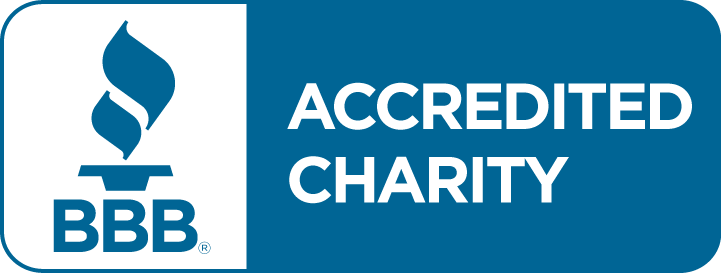Exercise
Exercise is recommended for every person, in every situation. But how much exercise do you need, and where do you start?
Exercise
Exercise is recommended for every person, in every situation. But how much exercise do you need, and where do you start?
Exercise
Exercise is recommended for every person, in every situation. But how much exercise do you need, and where do you start?
Activity Levels
When it comes to your treatment journey, you will have differing levels of activity levels. Be patient with yourself. The key is to keep moving.
Activity Levels
When it comes to your treatment journey, you will have differing levels of activity levels. Be patient with yourself. The key is to keep moving.
Activity Levels
When it comes to your treatment journey, you will have differing levels of activity levels. Be patient with yourself. The key is to keep moving.
Why Exercise?
Exercise is good for you, but here’s why … when it comes to colorectal cancer.
Why Exercise?
Exercise is good for you, but here’s why … when it comes to colorectal cancer.
Why Exercise?
Exercise is good for you, but here’s why … when it comes to colorectal cancer.
Exercising while on treatment

Get as much exercise as possible while on treatment, but take caution and limit exercises or spaces that may put you at risk. Don’t overdo it! Try to avoid:
The side effects of treatment may leave you feeling low energy, but the American Cancer Society (ACS) and the American College of Sports Medicine stress the importance of moderate activity during cancer treatment.
They suggest exercising as much as you’re able, as studies show that exercise leads to improved outcomes. Following diagnosis, it’s recommended that you return to normal daily activity as soon as you can.

Exercising while on treatment
Get as much exercise as possible while on treatment, but take caution and limit exercises or spaces that may put you at risk. Don’t overdo it! Try to avoid:
The side effects of treatment may leave you feeling low energy, but the American Cancer Society (ACS) and the American College of Sports Medicine stress the importance of moderate activity during cancer treatment.
They suggest exercising as much as you’re able, as studies show that exercise leads to improved outcomes. Following diagnosis, it’s recommended that you return to normal daily activity as soon as you can.

Exercising while on treatment
Get as much exercise as possible while on treatment, but take caution and limit exercises or spaces that may put you at risk. Don’t overdo it! Try to avoid:
The side effects of treatment may leave you feeling low energy, but the American Cancer Society (ACS) and the American College of Sports Medicine stress the importance of moderate activity during cancer treatment.
They suggest exercising as much as you’re able, as studies show that exercise leads to improved outcomes. Following diagnosis, it’s recommended that you return to normal daily activity as soon as you can.
Learn more about Complementary and Alternative Medicine (CAM).
Learn more about Complementary and Alternative Medicine (CAM).
Learn more about Complementary and Alternative Medicine (CAM).
Getting Started
Talk to your doctor about exercise and fitness programs available through the cancer center. Plan your exercise routine on your personal fitness level. Set short-term goals (this week I will ______ , this month I will ______).
Take breaks as needed during exercise. Exercise with a friend or take a walk with your dog. Try a stationary bike or elliptical machine if you have neuropathy.
Start slow and listen to your body – treatment recovery can take time. Take the stairs or ride your bike if you feel able. Be kind to yourself – getting back into an exercise routine can be hard. Start slow and listen to your body. Take the opportunity to get exercise when you normally wouldn’t, like sweeping the floor instead of letting the robot vacuum take care of it for you.
Almost half of all colorectal cancer patients need six months before feeling able to achieve the recommended amount of exercise for healthy adults.
Getting Started
Talk to your doctor about exercise and fitness programs available through the cancer center. Plan your exercise routine on your personal fitness level. Set short-term goals (this week I will ______ , this month I will ______).
Take breaks as needed during exercise. Exercise with a friend or take a walk with your dog. Try a stationary bike or elliptical machine if you have neuropathy.
Start slow and listen to your body – treatment recovery can take time. Take the stairs or ride your bike if you feel able. Be kind to yourself – getting back into an exercise routine can be hard. Start slow and listen to your body. Take the opportunity to get exercise when you normally wouldn’t, like sweeping the floor instead of letting the robot vacuum take care of it for you.
Almost half of all colorectal cancer patients need six months before feeling able to achieve the recommended amount of exercise for healthy adults.
Getting Started
Talk to your doctor about exercise and fitness programs available through the cancer center. Plan your exercise routine on your personal fitness level. Set short-term goals (this week I will _____, this month I will ______).
Take breaks as needed during exercise. Exercise with a friend or take a walk with your dog. Try a stationary bike or elliptical machine if you have neuropathy.
Start slow and listen to your body – treatment recovery can take time. Take the stairs or ride your bike if you feel able. Be kind to yourself – getting back into an exercise routine can be hard. Start slow and listen to your body. Take the opportunity to get exercise when you normally wouldn’t, like sweeping the floor instead of letting the robot vacuum take care of it for you.
Almost half of all colorectal cancer patients need six months before feeling able to achieve the recommended amount of exercise for healthy adults.
Exercise in Survivorship
Physical activity is recommended for everyone, and especially in survivorship. Benefits include:
Exercise in Survivorship
Physical activity is recommended for everyone, and especially in survivorship. Benefits include:
Recommended Routine for Survivors
Set a weekly goal of:
- 2 hours and 30 minutes of moderate physical activity OR 1 hour and 15 minutes of vigorous activity
- Incorporate strength training 2x per week
If you have an ostomy, talk to your doctor about any precautions you should take while exercising.
Start with whatever amount of physical activity works for you, and slowly build your way up to more vigorous activity. Some activity is better than none, and moving your body will help you start feeling more like yourself sooner.
Recommended Routine for Survivors
Set a weekly goal of:
- 2 hours and 30 minutes of moderate physical activity OR 1 hour and 15 minutes of vigorous activity
- Incorporate strength training 2x per week
If you have an ostomy, talk to your doctor about any precautions you should take while exercising.
Start with whatever amount of physical activity works for you, and slowly build your way up to more vigorous activity. Some activity is better than none, and moving your body will help you start feeling more like yourself sooner.
Recommended Routine for Survivors
Set a weekly goal of:
- 2 hours and 30 minutes of moderate physical activity OR 1 hour and 15 minutes of vigorous activity
- Incorporate strength training 2x per week
If you have an ostomy, talk to your doctor about any precautions you should take while exercising.
Start with whatever amount of physical activity works for you, and slowly build your way up to more vigorous activity. Some activity is better than none, and moving your body will help you start feeling more like yourself sooner.




